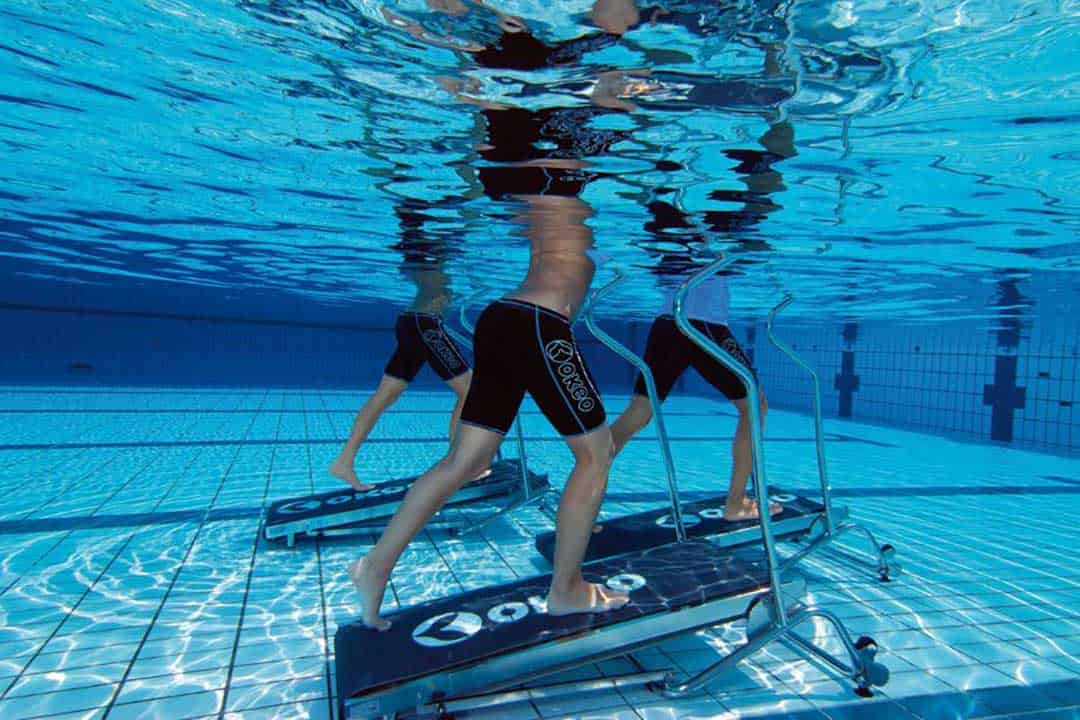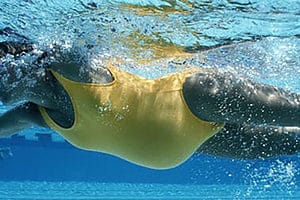
The healing powers of swimming; We all have fond memories of splashing around in backyard pools as kids, spending long summer days swimming with friends without a care in the world. The pure joy and excitement of jumping into cool water is an experience many of us can relate to from our childhoods. As we grow older, it's easy to lose touch with that carefree feeling. But rediscovering the magic of swimming as an adult comes with a whole host of health and wellness benefits. Let's dive in and explore why taking up swimming again can be one of the best things you can do for your physical and mental health.
Swimming provides a low-impact yet highly effective workout. The buoyancy of water reduces strain on the joints and muscles, making swimming accessible for people of all ages and abilities. Swimming engages the entire body without the high-impact stress of land-based exercises, allowing even older individuals or those recovering from injuries to reap the benefits. People who have weight issues can workout comfortably in the water as well. Whether you're a competitive swimmer or just looking for a gentle activity, swimming offers an exercise option with great versatility. The resistance provided by water makes swimming an efficient strength and cardio workout. With benefits for both physical and mental health, swimming is a universally great form of exercise.
Swimming provides a low-impact cardio workout. The water's buoyancy supports your body weight, reducing stress on joints and muscles. This makes swimming ideal for people with arthritis, fibromyalgia, obesity, mobility limitations, or who are pregnant.

Healing Powers of Swimming Pools
Swimming strengthens your cardiovascular system. Studies show it improves cholesterol levels, reduces blood pressure, and lowers risk of heart disease and stroke. Always consult your doctor before beginning a new exercise program.
The breathing techniques used in swimming can improve lung capacity and efficiency. This helps people with asthma or COPD breathe easier. But pool chemicals may exacerbate asthma, so consult your doctor first.
Swimming laps at a moderate pace burns 255 calories in 30 minutes for a 154-lb person. Strokes like butterfly burn more calories but are harder to learn. Freestyle is better for beginners looking to lose weight.
Swimming works all major muscle groups. The water provides more resistance than air, so you build strength faster than land workouts. It improves both cardiovascular endurance and muscular strength.
One of the best aspects of swimming healing powers is that it puts less stress on your joints than many other forms of exercise. This is thanks to the natural buoyancy of water. When you're submerged in a pool, the water supports your body weight, reducing the impact on your joints as you move through the water.
Several studies have found that aquatic exercise like swimming can benefit people with joint conditions like arthritis, fibromyalgia, and obesity. The buoyancy effect helps take pressure off sore, stiff joints, allowing for greater mobility. Swimming engages the muscles to increase strength and range of motion, without overtaxing the joints.
For those managing chronic joint pain and inflammation, swimming provides the conditioning effects of exercise with minimal joint stress. The arthritis foundation recommends swimming along with aquatic aerobics as safe and effective exercise options. The buoyancy of water makes swimming an ideal low-impact activity for maintaining joint health.
Want to keep your ticker at peak function? Cardio activity is one of the keys to a healthy heart, and swimming’s cardiovascular benefits are clear. Swimming helps improve several markers of heart health:
Cholesterol - Studies show that regular swimming can help improve cholesterol levels by increasing HDL (good) cholesterol and decreasing LDL (bad) cholesterol. The aerobic exercise helps remove LDL cholesterol from the blood.
Blood Pressure - The aerobic activity and conditioning from swimming helps lower blood pressure. Research indicates regular swimming can reduce systolic and diastolic blood pressure.
Heart Disease Risk - There is strong evidence that swimmers have a significantly lower risk of death from heart disease and stroke compared to non-swimmers. One major study found that swimmers have a 41% lower risk of death due to heart disease or stroke. The cardiovascular benefits of swimming likely contribute to an overall 28% lower risk of early death for swimmers.
The aerobic exercise works to strengthen the heart muscle and improve heart health. Always consult a doctor before beginning a new exercise program, especially if recovering from a cardiac event. But studies show swimming can be suitable for cardiac rehab patients under medical guidance.
If you want to breathe easier, swimming might help do the trick. The resistance provided by the water requires your body to use oxygen more efficiently as you swim. This improved lung efficiency leads to increased lung capacity over time.
Studies have shown that the cardiovascular exercise of swimming improves lung strength and overall respiratory function. Swimmers tend to have greater vital capacity - the total amount of air your lungs can hold. The aerobic activity also helps clear mucus from the lungs.
People with asthma and other chronic lung conditions like COPD can benefit from swimming to improve their symptoms. The exercise strengthens respiratory muscles without irritating airways.
However, it's important to be cautious, as studies have also shown that long-term exposure to the disinfectants used in pools may exacerbate asthma. Those with chronic lung conditions should check with their doctor before beginning a swimming routine. Downunda suggest a salt water pool to help with exposure to pool disinfectants. A salt water pool provides a very mild chlorine content.
When done properly, swimming can be an excellent way to increase lung capacity and efficiency for better breathing. The water provides natural resistance that strengthens respiratory muscles in a less jarring way than land exercises. But special care should be taken by those with chronic conditions to ensure swimming is safe.
Like other forms of cardio, swimming can help you burn calories and lose weight. However, the amount of calories burned varies quite a bit depending on your stroke, weight, and speed in the water.
The freestyle stroke tends to burn the most calories. According to the U.S. Centers for Disease Control and Prevention (CDC), a 154-pound person swimming at a moderate pace for 30 minutes will burn approximately 255 calories doing the freestyle stroke.
Heavier people burn more calories swimming than lighter people. The same 30 minute moderate swim would burn around 300 calories for a 185 pound person.
Faster swimmers also burn more calories in the same amount of time. If you pick up the intensity and swim at a vigorous pace, you could burn as much as 526 calories (for a 154 pound person) in just 30 minutes.
The stroke you choose also impacts calories burned. While freestyle burns the most, other strokes like breaststroke and backstroke burn calories at a slightly lower rate. Butterfly stroke burns calories the fastest, but it is extremely difficult for most swimmers and not recommended for beginners.
Overall, swimming at a moderate to vigorous intensity for 30-60 minutes is an excellent way to burn calories and can be incorporated into a weight loss program. Just be sure to focus on good technique, especially if you're new to swimming.
The built-in resistance that water provides helps build muscles and makes you stronger. Swimming works your muscles harder than exercises like running or biking because water is much more resistant than air.
As you swim, you have to push and pull against the resistance of the water. This resistance engages all of your major muscle groups, especially the muscles in your back, shoulders, arms, and legs. The end result is that regular swimming helps build lean muscle mass throughout your entire body.
Research confirms the muscle-boosting power of aquatic exercise. One study found that competitive swimmers have higher muscle mass and lower body fat compared to runners. The buoyancy of water enables swimmers to move and work their muscles in a broader range of motion than land-based exercises like running. All of this contributes to optimal muscle-building.
So if you're looking to get stronger and more toned, swimming is a great option. The water resistance will help you develop strength and muscle definition in a low-impact, joint-friendly way. Just be sure to use proper swimming technique for the most muscle-sculpting benefits.
Swimming can enhance your mood and reduce feelings of anxiety and depression. Being in the water has a calming, meditative effect that can melt away stress. One study found that people felt more positive and less tense after exercising in water compared to land. Plus, you get that mood-boosting rush of endorphins any time you exercise. The social nature of swimming with others or taking a class can enhance these effects while combating isolation. So if you're feeling stressed, anxious or down, try hitting the pool for an emotional lift. Swimming may be just the thing you need for better mental well-being.
Swimming is a fun, low-impact activity with numerous health and fitness benefits for people of all ages and abilities. As we've explored, regular swimming can strengthen your heart, lungs, and muscles while easing joint pain. It can help you lose weight, reduce stress, and boost mental health too.
Whether you're recovering from an injury or managing a chronic condition, swimming likely has a place in your exercise routine. Check with your doctor first, then see if your local YMCA, community center, or health club offers lap swimming or water aerobics classes. Or simply head to your neighborhood pool and swim some laps on your own this summer. Just be sure to use proper stroke technique to avoid injury.
The child-like joy of jumping in the water needn't be just a memory. Rediscover that feeling for yourself. Grab your swimsuit and goggles and dive on in - your mind and body will thank you!